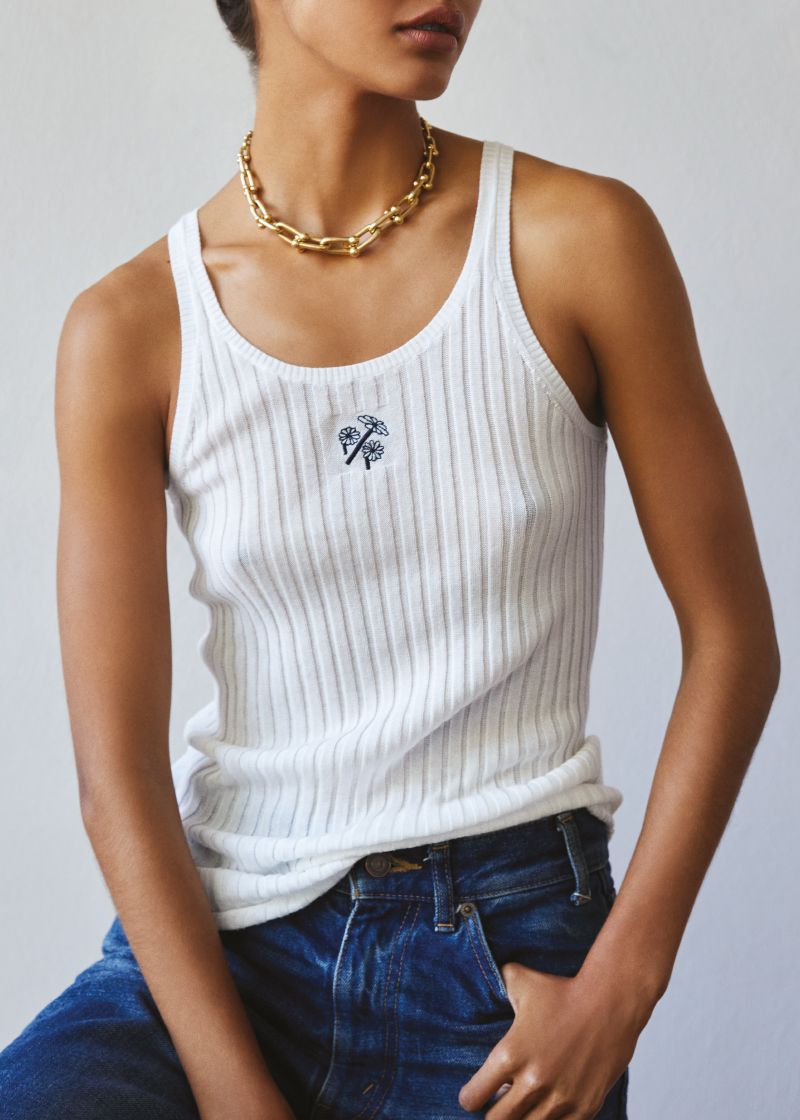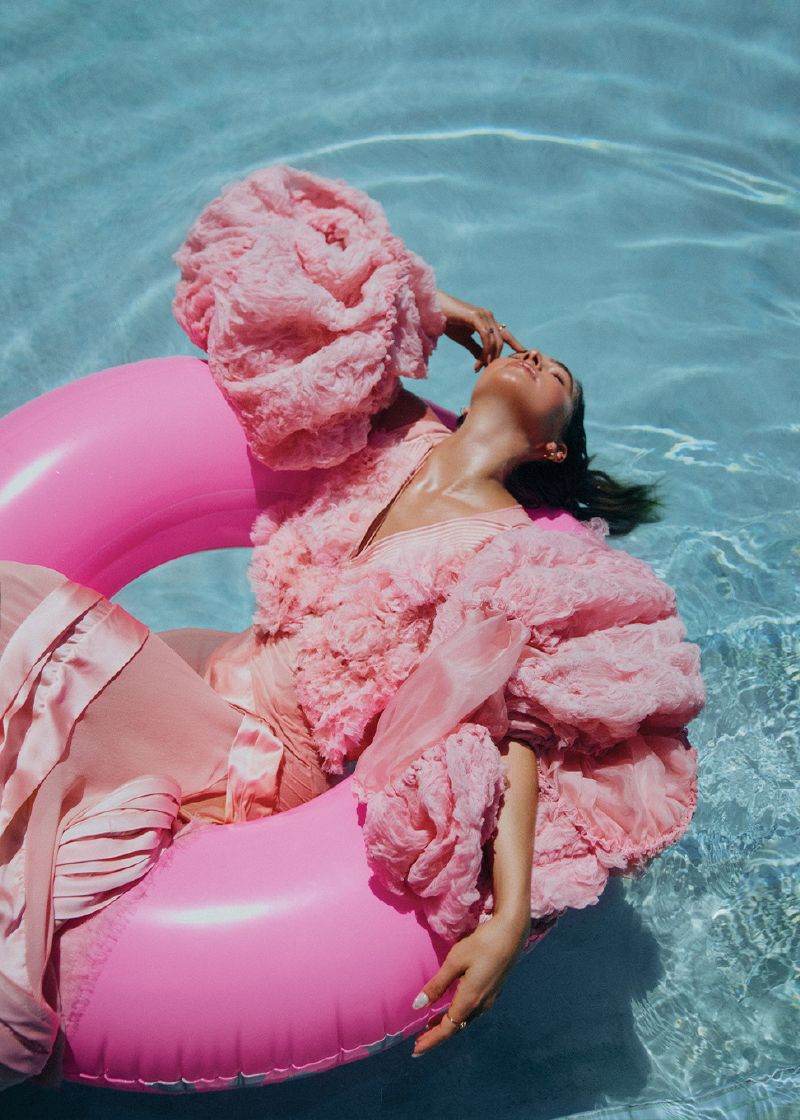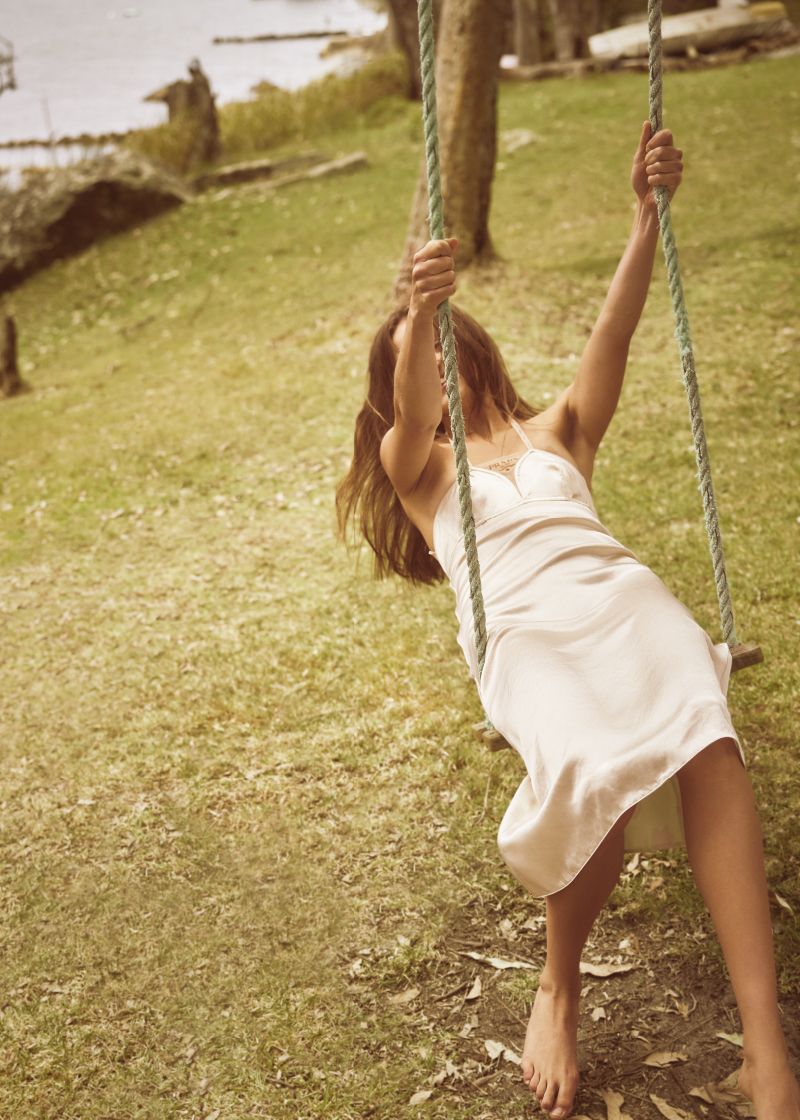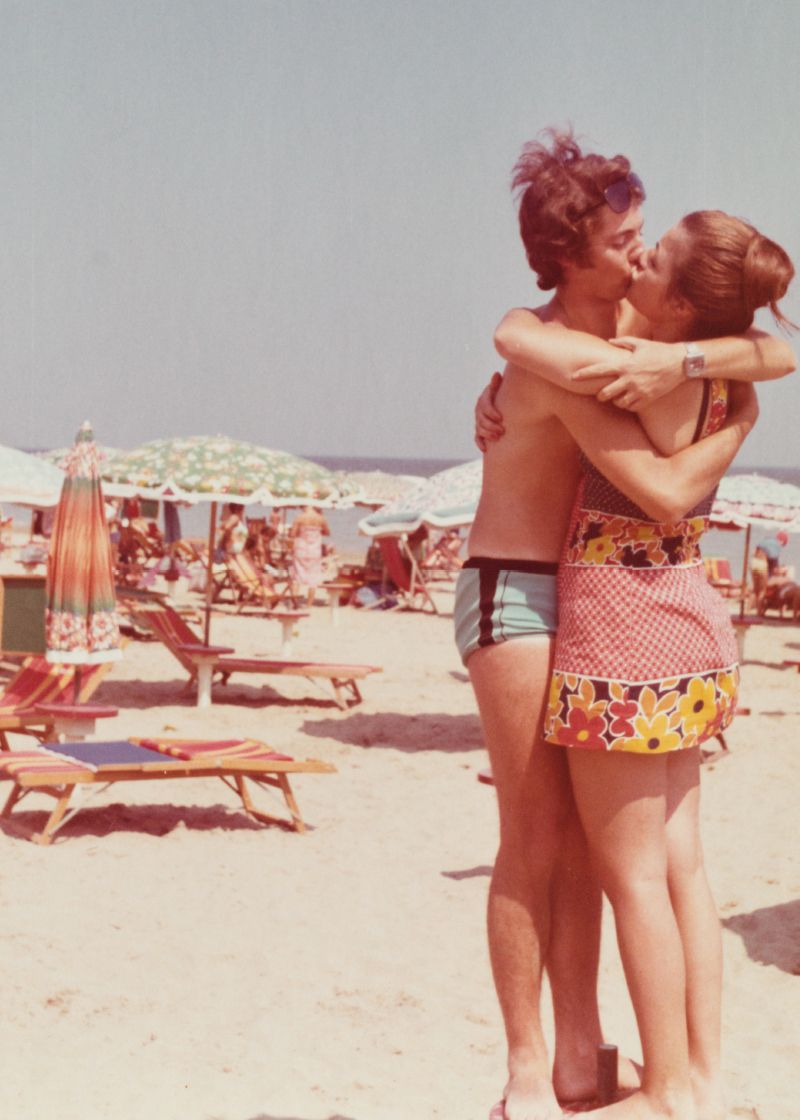
Is this the end of the bra?
More and more women are ditching their bras in favour of FREEWHEELING. So does the trend have staying power? And, asks Divya Venkataraman, did we ever really NEED them at all?
Let me begin with a proclamation: I have never noticed so many nipples as I did in the year 2023. Big nipples, small nipples, downward-facing nipples and pierced nipples. Nipples poking out through white tanks, nipples boosted by bustiers and nipples clearly visible under crisp white shirts. With the honourable exception of sunbathing French women on holiday, many of the aforementioned nipples were covered by something – but still, they were defiantly there. It was like an invisible memo had circulated among people with breasts: it was the season of bralessness, and it was high time we all joined in.
One key factor: it has been hot. In many parts of the northern hemisphere, it was a remarkable summer. For the first travel season in years, Covid was less of a looming threat and tourists took that as licence to dive headlong into hedonism. Heatwaves washed over Europe and Australians pushed ahead on tomato-girl vacations. Mediterranean paradises swarmed with sweaty bodies and those who had flown all the way over to enjoy themselves, damn it, sloshed Campari spritzes over the side of pay-per-day Italian boats. As soon as the clock struck spring, Australia, too, turned over a new, very warm leaf. Winter saw itself out with little fuss.
Pure heat can call us to shed our layers, but so too can the exasperation of climate despair. What better way to both cope on a hot day and express a devil-may-care attitude in the face of a rapidly heating planet than by going braless? In times like these, many of us are saying – it’s so hot, so threateningly apocalyptic – does it really matter if anyone can see our nipples?
This bra-shedding sentiment echoes that of an equally turbulent time: March 2020. “Day 2 in quarantine. I have decided to forego [sic] bras. The world has restricted me enough” read a trending tweet. “The day I have to wear a bra again after all this quarantine stuff passes … that’s the day I will suffer the most …” said another. Women began to put their money where their tweets were and in October 2020, UK lingerie retailer Bravissimo reported a 30 per cent drop in revenue. For many who were able to work from home during the pandemic, it was the first time they could go about their daily work without wearing constricting clothing and, of course, they found that they were able to do so just as effectively. In 2023, as remote work remains a reality for many, so too does the desire to remain unbounded and unhooked.
The cost of living crisis may have also influenced this braless uptick. “It might sound cynical, but I’d say a [significant] influencing factor on trends now is cost motivation,” says lingerie designer Karolina Laskowska, who has spent much of her career preoccupied with women’s undergarments (as well as designing, she is a co-founder of underwear archive The Underpinnings Museum).
Does it really matter if anyone can see our nipples?
She recalls the rise in popularity of bralettes in the 2010s – less structured and restrictive than their cleavage-enhancing predecessors – and how this was ascribed to the body positivity movement and the rise of #MeToo. Sales of wired bras fell 45 per cent in 2018, but soft bras rose and rose. Laskowska says it’s tempting to link those boosts to the simultaneous push against the male gaze, but she believes the reality is simpler: bralettes “are much cheaper and easier to manufacture” than structured bras. “And no bras at all? Even cheaper, and it means the focus can move to the outer clothing, which is easier to sell, with higher profit margins in turn.” Was the bralette the unwired canary in the coalmine of the current economic crisis? It may seem a stretch, but fashion and the economy often walk hand in hand: the popular hemline index theory suggests that skirts are shorter in times of economic prosperity, and that they fall as times get tougher. Maybe bras represent the evolution of this theory.
Whatever the motivation – comfort, cost, politics or bodily autonomy – women all over are starting to question long-held ideas about bras. Will my boobs sag without them? Do I really need one? No, according to high-profile nipple-baring ambassadors like Kendall Jenner and Florence Pugh (the latter wore a sheer pink Valentino dress in 2022 and attracted a rampage of hate comments, but bit back on Instagram: “Why are you so scared of breasts? Small? Large? Left? Right? Only one? Maybe none? What. Is. So. Terrifying.”).
Sydney-based Jananie Janarthana is a size 14G and found herself wearing bras less and less after the pandemic. Originally it felt “really liberating” – until she became conscious of how she looked in photographs. “I was like, wow, they’re saggy.” She acknowledges that the standard she’s expecting of herself is unrealistic. “Ultimately, having them stay perky, especially when they’re this big, is pretty hard. But [not wearing a bra] definitely started to make me feel self-conscious. So, basically: normalise saggy boobs.”
Today, it feels like we’re shrugging off old notions that we should all have perfectly round, tennis ball-shaped breasts under our T-shirts (see Chidera Eggerue’s #SaggyBoobsMatter movement). Summer Anne Lee, a fashion historian and faculty member of the Fashion Institute of Technology (FIT), hopes that deciding to go without a bra is “something that everyone feels they can participate in if they wish to, not only people with society’s ideas of ‘perfect’ breasts and nipples”.
She notes, too, that the movement away from traditional bras isn’t without precedent: restrictive women’s undergarments have always had pushback. In Victorian society, there were groups like the Pre-Raphaelites and the Rational Dress Society, who believed women would be better off “if they ditched the corset”, Lee explains, due to how uncomfortable and manipulative they were. Though there was a trade-off: a woman without a corset couldn’t be admitted into polite society. Her morality would be thrown into question. It wasn’t an easy trade.
Whatever the motivation – comfort, cost, politics or bodily autonomy – women all over are starting to question long-held ideas about bras. Will my boobs sag without them? Do I really need one?
At a Miss America pageant in 1968, activists threw bras, lipstick and false eyelashes to protest the institution’s valuing of women’s bodies over their intellect, while decades later, in 2017 in Florida, Lizzy Martinez organised a nationwide #bracott after she was pulled aside for violating her school’s dress code (the shape of her nipples was visible under her shirt). At the same time, the Free the Nipple movement was in full swing, with women around the world deciding that it was not for other people to decide when and how they showed their breasts. So freed and normalised is the nipple today that Kim Kardashian’s Skims launched a bra with built-in nipples – so you can always look erect, and, err, cold, without going braless.
But true, freewheeling bra-cotters can rest easy in their choices. According to Dr Michelle Funder, president of Osteopathy Australia, not wearing a bra in daily life hasn’t been linked to any negative health outcomes (though women should definitely consider wearing a bra during exercise). What’s more? Wearing a bra doesn’t prevent sagging, despite what we may have been told to the contrary as teens. In fact, a 15-year-long French study published in 2013 found that wearing a bra could actually increase the potential for sagging, by weakening the muscles that hold up the breasts. “Medically, physiologically, anatomically – breasts gain no benefit from being denied gravity,” said Professor Jean-Denis Rouillon, one of the leads on the study. Ultimately, a bigger factor in how saggy your breasts are, or will become, is genetics. And given the helping hand of gravity, at least a little sag is unavoidable for us all over time.
So what does this all mean for the future of the bra? Fashion, of course, is often a world of diametrically opposing forces – and cyclical ones. So while bras may find themselves shelved for the moment, Victorian-style corsetry has had a boom. Just look to the tight-laced bustiers at All Is A Gentle Spring, or the grungy, zipped-up creations of Dion Lee. “It feels like the pace of fashion’s change has accelerated to the point where everything is in vogue all at once,” says Lee. Perhaps that’s the beauty of our moment? Lee thinks so. “You can wear a steel-boned corset and your friend can go topless at the same event, and you can both be the pinnacle of fashion.”

Time of her life
The infectious spirit and BIG FEELINGS of actor Haley Lu Richardson. By Courtney Thompson

Busy doing nothing
Slow down. DRESS UP. And give in to the joy of doing very LITTLE

Destination sex
How do people have sex on holiday? Courtney Thompson explores our urges, desires and freedom to experiment when far, far away